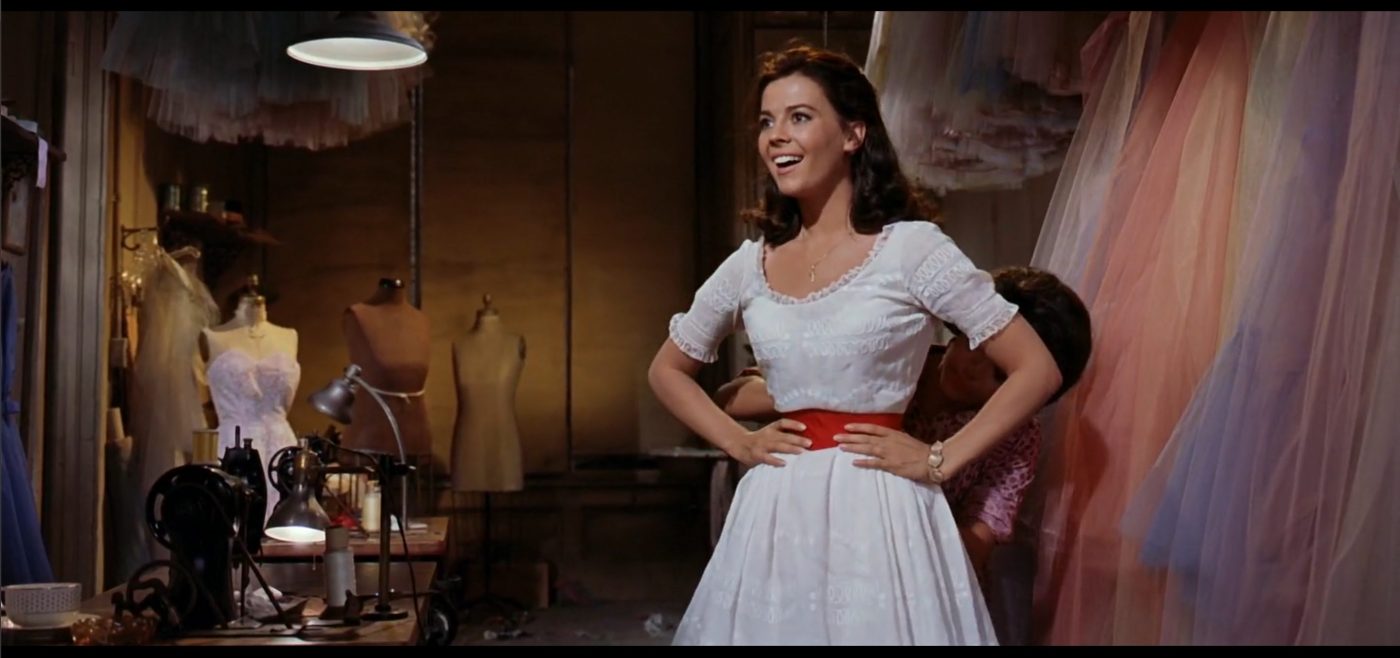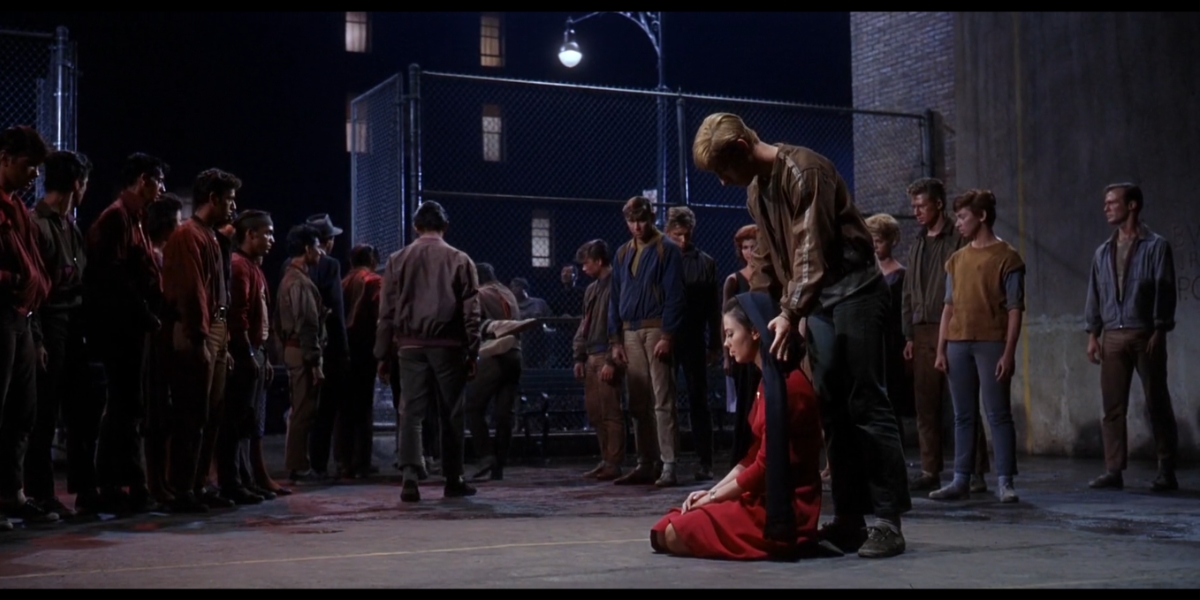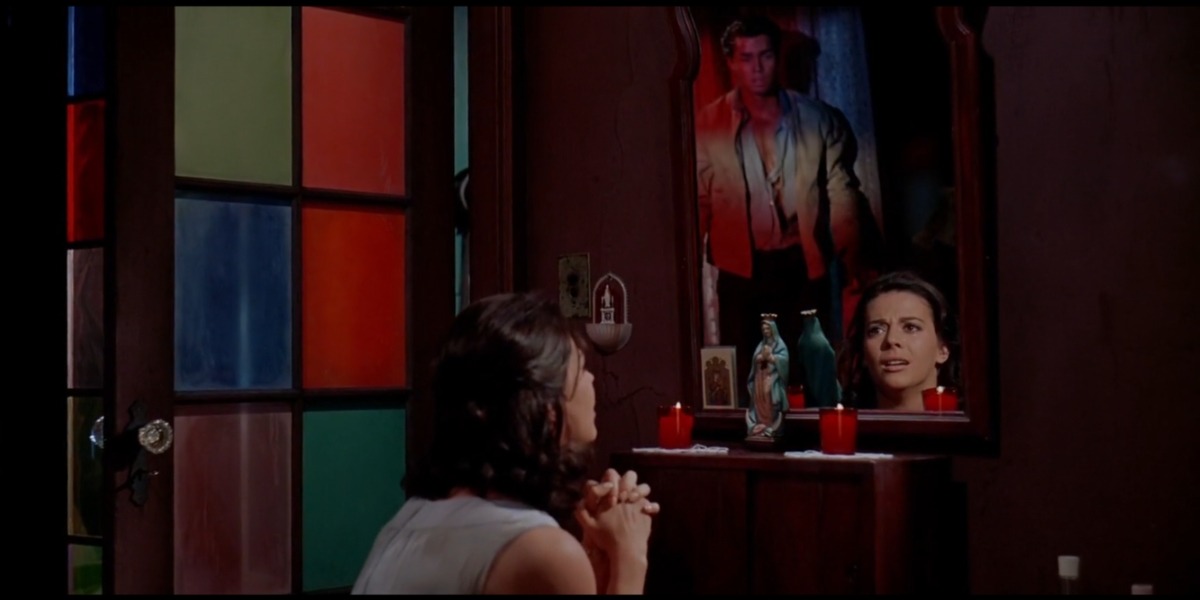We celebrate 60 years of West Side Story by analyzing how hidden spirituality and religious references open it to a different reading of the ending.
West Side Story isn’t a film about religion, but it almost wasn’t. Jerome Robbins’ initial project was intended to be an adaptation of Romeo and Juliet in which the clashes between the two rival factions would take place on the Lower East Side. A geographical change that would also have changed the object of the story’s contention. There East Side Story centered on the tensions between Catholics and Jews and was set during Passover. The main theme of anti-Semitism was embodied by what would later become Mary. The female lead was originally an immigrant Holocaust survivor in New York.
A similar story was already spinning on the stages. She had told it Abie’s Irish Rose (Rose of Ireland), Anne Nichols’ play of 1922. Hollywood had made a film of it in 1928 directed by Victor Fleming and in 1946 directed by Edward Sutherland enjoying good popularity. It narrates the encounter between an Irish Catholic girl and a young Jew. The two fall in love and, contrary to the opinion and tensions between their respective families, they want to get married.
When Arthur Laurents was commissioned to write the libretto, he objected to the premise of East Side Story. In fact, he feared that the work knew something already seen, going to re-propose a situation that has already been extensively treated. Abie’s Irish Rose it had in fact generated many imitators, including The Cohens and Kellys, who had even been at the center of a lawsuit filed by Nichols against Universal. The accusation was that he had copied his characters.
From East to West Side Story: the heart is the same, the themes change
The main conflict of West Side Story begins to take shape in 1955. Laurentis and Bernstein coincidentally meet on the same night at the Beverly Hills Hotel in Los Angeles. They chat and realize that the attention of local newspapers is particularly drawn to the conflicts between the youth gangs that ignite the streets. That’s the idea they were looking for. Thus they renounce religious conflict, and put ethnic conflict at the center. Thus were born Tony and Maria, a Pole and a Puerto Rican divided by blood … but both Catholics!
The religious theme has not however disappeared from West Side Story. He remained hidden, like a color on a wall after he was given another coat of paint. It is not seen explicitly, but if you look closely you can still see it in the nuances. The social issues are evident, the analysis of a society aware that it is changing rapidly after the war, in which young people still fight each other under the astonished eyes of the elderly who enjoy peace. We sing and dance against a rampant but unjust economy, which creates inequalities between American citizens and others who wish to be fully. But underneath all this there is also a spiritual film. Not religious, but celebratory.
A celebration in secular spaces that are filled with rituals
Paul Nash’s essay explains it well: “The most beautiful sound I ever heard ‘: Liturgy, Religious Imagery and Symbolism in West Side Story“. The work of Bernstein, Laurents, Robbins and Sondheim (all four authors are Jewish) can be read as a long celebration of a sacrifice. There is the evil: the war between rival gangs, the Jets and the Sharks and the need for a purification that allows the hostilities to cease. A consecration of the spaces of the city that become a large open-air altar. This happens at the level of the libretto, in the direction and in the music.
Bernstein uses the recurring themes as a reminder of a liturgical anamnesis. That is the memorial of the mysteries, the re-enactment of the saving events that return over time. It is no coincidence that the prologue of West Side Story it opens with a sound that recalls the Shofar, an ancient horn of biblical tradition used as an alarm sound for battles and dangers. Today those notes are used in the Jewish celebration of Yom Kippur, the day of atonement. The sound of the Shofar marks the end of the celebration, which begins at dusk and continues until the first stars of the following night. West Side Story, unlike Romeo and Juliet, it shares this limited time frame with Yom Kippur for a narrative that spans just over a day. The whistle, which we hear echoing in the streets, therefore indicates either the end of a celebration, or the beginning of an ancient war.
The religious and spiritual echoes in the characters of West Side Story
From the name of Maria you can guess an evident religious appeal, with which the work continues to play. Angelic woman, she inspires love and the cease-fire in Tony. However, it is not enough: she is helpless and in the dramatic finale she experiences the loss of her in the most human way possible: she mourns her dead loved one with anger, she would like a revenge that is not granted to her. She falls to the ground with no more energy. She cradles Tony’s lifeless body in one Compassion urban. Even she is veiled, as a last gesture, as the rival gangs move away from her. Her dress is red.
When we first meet the character of Mary on stage, another spiritual signifier is present. Her white communion dress, worn as a symbol of purity, is readjusted for dance thanks to a red belt. Foreshadowing what is about to happen.

The recurring research in the story of Tony and Maria is twofold.
There’s a place for us / Somewhere a place for us / There’s a time for us / Someday there’ll be a time for us.
There is a place for us somewhere and at some time, they say. It can be an earthly place, that America of betrayed illusions that cannot enjoy progress, deeply intolerant, suffocates love and obscures destiny. At the same time, re-reading the text starting from the tragic ending, this place takes on the meaning of a religious elsewhere. A place where desire can finally be filled in an eternal and immortal love. “Something’s comin ‘, something good “, something good is coming. He is not a savior, but a chance to change.
Tony, in rituality, is the sacrificial lamb. He who finds himself dragged into a conflict by force (no more than him) and who must perish in order to restore peace. Every death in West Side Story creates an escalation of violence, except that of Tony who absorbs it and cancels it.

A music between sacred and profane
Providing further evidence of this duality between earthly and transcendent is the beginning, with a shot in the eye of God, followed by a shot at the level of the human eye. Because this is a film of walls and earth. So is Bernstein’s music that contaminates popular rhythms with classical and liturgical music. That there is something evil to atone for is signaled from the beginning by the use of the so-called tritone of the devil. In the Middle Ages this dissonant sounding interval was regarded with suspicion (some say it was even forbidden) as the presence of the devil in the score. Bernstein, to consecrate and desecrate, also attributes it to Mary.
Say it loud and there’s music playing / say it soft and it’s almost like praying ‘
Prayer in West Side Story joins with adoration. Tony marries Maria, staging the wedding. Similarly, while courting her on the balconies she worships, from bottom to top. Looking and begging the sky he has a vision: the angel woman, the inspirer of a new world. But she is also the one who will lead him to death. Yet for the short span of 24 hours Tony will see the possibility of a disappearing darkness. “Can this be Heaven?“, they sing. Did their love create a heaven on earth, at least for the two of them?
West Side Story it is the revival of hard facts, of a chronicle in the streets that continues in a continuous cycle. Someone loves each other, someone takes revenge, since the dawn of time. What Bernstein, Laurents, Robbins and Sondheim manage to stage in an extraordinary way is precisely this double ritual. They tell the senselessness of war, of the process of man’s self-destruction in a paradoxical and dead-end spiral. At the same time, under the story, inside the objects and signifiers, they show a second ritual, the religious, purifying one, which explains how to interrupt this cycle of pain. You need someone who loves you, who believes in love, and is willing to die for it.
West Side Story and hidden spirituality in a world without redemption

